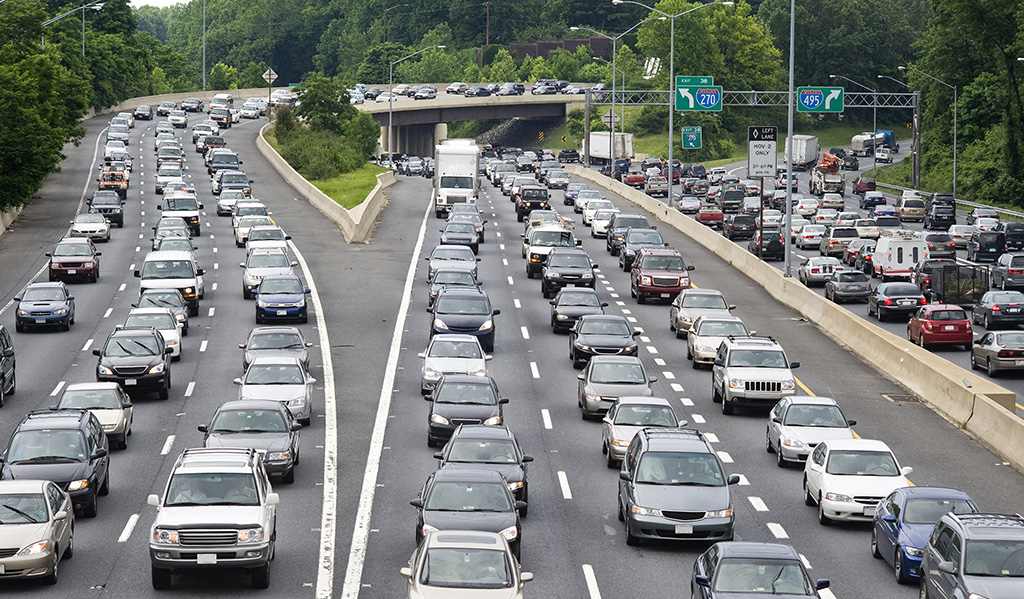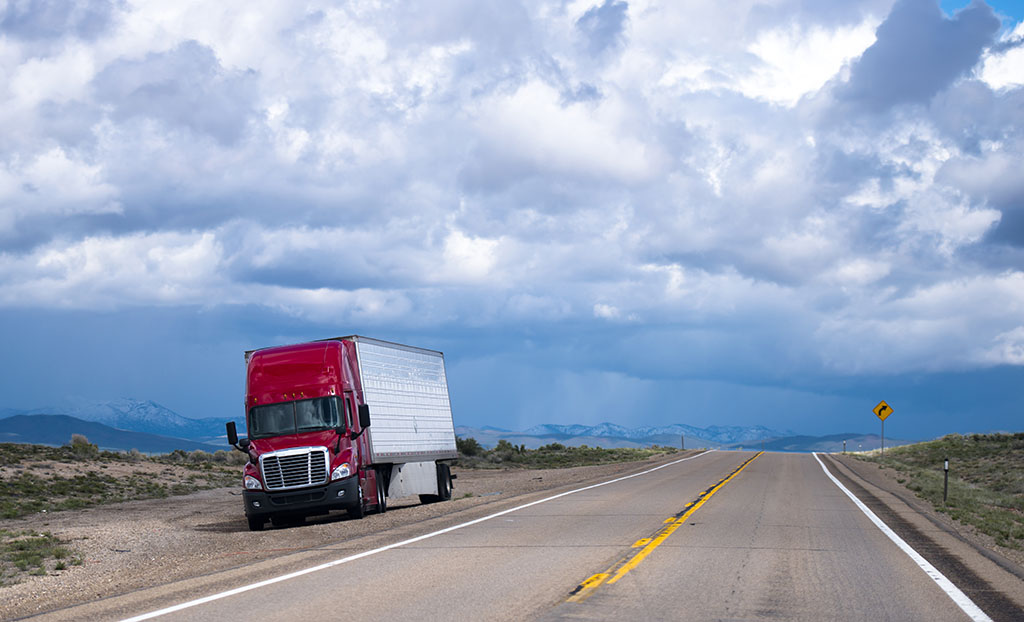When addressing the widespread needs of American infrastructure, here are two logical places to start.
Overview
With mounting bipartisan support in Congress for an infrastructure bill this year, a national conversation is fast approaching over where the greatest opportunities exist for federal investment in our transportation and energy networks. Although the widespread deficiencies in U.S. infrastructure run deep, a strong case can be made that surface transportation—roads and bridges specifically—offer the highest, most broad-based return on investment, with measurable and equitable benefits for jobs and the economy, the motoring public, highway safety, the environment and public health.
The reason is simple: Despite the multi-modal options available to commuters, travelers and shippers today, roads remain the predominant means for how we move people and things. A full 87% percent of passenger miles happen on the highway. More than 72% of our total domestic tonnage (totaling 11.8 billion tons of goods valued at $10.4 trillion) moves by truck across these highways. All other modes—air, rail, transit — often depend on road networks for either the first mile or the last, or to even function at all.

But as documented by the American Society of Civil Engineers, “America’s roads are often crowded, frequently in poor condition, chronically underfunded, and are becoming more dangerous.” More than two out of every five miles of America’s urban interstates are congested, and one out of every five miles of highway pavement is in poor condition.
The societal costs from these shortfalls are equally broad-based:
- Quality of life: Each American loses nearly 100 hours every year to traffic congestion. From 2017 to 2019 the average time lost by American drivers has increased by two hours.
- Cost of living: Poor road conditions and congestion cost the typical motorist $1,600 in lost time, lost wages and vehicle repairs.
- The economy: Highway congestion adds nearly $75 billion to the cost of freight transportation each year—costs borne by both producers and consumers.
- Safety: Road conditions are a factor in 53% of fatal traffic crashes.
- The environment: In 2016, truck drivers sat in highway traffic for nearly 1.2 billion hours, burning 6.87 billion gallons of fuel—13% of their total fuel consumption—resulting in 67.3 million metric tons of excess CO2 emissions into the atmosphere.
- Urban America: Freight bottlenecks are concentrated in metro areas, adversely impacting urban, minority and low-income communities.
- Rural America: The deteriorating highway network threatens the livelihood of farmers and their ability to get goods to market
With disrepair so commonplace across the country, where do we even begin? How can Congress prioritize projects and funding, equitably and to maximum effect, when they can’t even agree on revenue sources and payment methods? The trucking industry offers valuable perspective and data to help policymakers answer these questions.
Considering truckers log a combined 300 billion miles every year, no one experiences our highway system and knows its weaknesses like our industry does. No one sees firsthand how serious these shortfalls have become as the U.S. falls further and woefully behind China in an ever-widening infrastructure gap.
And thanks to real-time truck GPS data provided by our fleets, we can pinpoint precisely where the trouble is most acutely emanating from.
Freight Bottlenecks
When weighing its priorities, Congress should begin with the National Highway System, which accounts for only 5% percent of highway mileage yet carries 55% of all vehicle miles traveled. Here the 80-20 rule, or Pareto Principle, applies: 87% of total truck congestion costs nationwide is caused by only 17% of National Highway System miles.
Drilling down further, the American Transportation Research Institute recently released its annual Top Truck Bottleneck Analysis, which isolates the worst 100 traffic chokepoints in the country using real-time GPS data from more than one million trucks. Although 2020 was a highly unusual year, with pandemic restrictions alleviating some congestion as motorists stayed home, the analysis captures where the most pressing problems continue to occur.
These breakdowns in the national highway system are clogging our nation’s economic arteries—and with far-reaching consequences. Localized freight bottlenecks don’t just choke their surrounding metro areas. They have a very real regional impact, affecting markets and individuals thousands of miles away across many states. Let’s look to the Southeast to see how.
The 603-mile long freight corridor between Jackson, Mississippi, and Charlotte, North Carolina, connects six separate interstate routes, cutting across five different states and passing through several major metro areas, including Atlanta, Georgia, and Birmingham, Alabama. This key stretch of interstate sees an inordinate amount of freight throughput, especially in agriculture. More than 553 million ton-miles of meat, 400 million ton-miles of poultry and 220 million ton-miles of dairy pass through this corridor over the course of a given year on their way to processing facilities in Jackson and slaughterhouses in Georgia.
Our nation’s farmers and ranchers have sounded the alarm on the threat that deteriorating infrastructure poses to their ability to make a living. In pleading its case to Congress, the American Farm Bureau has said “the degradation of surface transportation efficiency threatens our nation’s preeminent economic standing in the world and endangers the livelihood of farmers, ranchers and truck drivers employed in industries that depend on a well-maintained, reliable transportation system.”
Traffic congestion on our national highway system adds an annual $75 billion to our economy’s freight transpiration bill. These increased transportation costs are borne not only by producers and truckers, but ultimately by consumers in the form of higher prices at the store.
Freight bottlenecks also exact a heavy toll on our environment. Traffic congestion caused trucks to burn an excess 6.87 billion gallons fuel—nearly 13% of their total fuel consumption. This waste results in 67.3 million metric tons of excess CO2 emissions being released into the atmosphere. The majority of bottlenecks exist in or adjacent to metro areas, raising issues of environmental justice as urban and minority communities face the greatest exposure to these pollutants.
Congress should establish a set-aside of funding for major highway bottlenecks to address the root causes of congestion across the entire system, alleviate enormous strain on our supply-chain, boost highway safety and spare our environment from unnecessary harm.
Truck Parking
COVID caused a re-awakening in public consciousness to the importance truckers hold in our everyday lives. Economic shutdowns brought Americans to realize how essential trucks are to receiving the basic necessities we all take for granted—and to recognize the everyday heroism exemplified by the incredible men and women working behind the wheel.
Trucking isn’t easy, but navigating challenge is what truckers do. While shuttered public bathrooms and rest stops added a new layer of hardship to truckers’ duties, the unpleasant fact is that they’ve been hampered by insufficient infrastructure long before the pandemic came to be. Perhaps no issue looms larger than the severe shortage of available truck parking.
The Federal Highway Administration’s Jason’s Law report found that 98% of drivers reported problems finding safe truck parking. From Roll Call:
Stymied by a lack of parking for increasingly large tractor-trailers and forced by federal hours-of-service requirements to park after a certain amount of time on the road or be fined, truckers are parking along the exits to truck stops, along the sides of highways and in other places that put them and passing drivers at risk.
“The hardest thing of the day is to find a parking spot,” said Doug Smith, a trucker based in Bountiful, Utah. He said the pandemic has made it harder to find bathrooms and places to eat, but parking, a problem even before the pandemic, has been made worse as distribution centers where trucks drop off or pick up loads have barred truckers from parking because of COVID-19 concerns, putting even more demand on truck- and rest-stop parking.
Across the U.S., there are more than 11 truck drivers for every one parking space. The average truck driver parks 56 minutes earlier than necessary in order to ensure that they are able to find a safe, authorized parking location. That wasted time amounts to a $5,500 loss in annual compensation – or a 12% annual pay cut.

The severe shortage of available parking forces truckers with an often daily and untenable dilemma: either keep driving when they are fatigued and possibly in violation of their federal hours-of-service requirement—or park in unsafe, sometimes illegal locations such as a roadside shoulder. Left with two bad choices, nearly 58% of all drivers admit to parking in unauthorized or undesignated spots at least three times per week to meet their parking needs.
On the other hand, some truckers will opt to continue driving without adequate sleep because they can’t find a place to park. In addition to endangering the driver and motoring public, HOS violations can be costly as well, with fines ranging from $150 to $16,000. An accumulation of violations can lead to a decrease in a driver’s safety history, leading to higher insurance rates and even license suspension.
The health and wellbeing of truckers, the safety of the motoring public and the sustainability of our supply chain all depend on Congress addressing this issue with adequate funding in a surface transportation bill. Thankfully, Rep. Mike Bost (R-IL) has answered that call. He’s been an absolute champion for truckers, introducing the Truck Parking Safety Improvement Act, which would establish a set-aside pot from U.S. Department of Transportation Funds to create more parking spots for our nation’s commercial drivers.
If America truly wants to thank a trucker – give them a place to park.
In Closing
By looking to America's trucking industry, Congress will find constructive partners and a roadmap for smart, strategic investments in national infrastructure that can benefit all Americans. Although the challenge in fixing our country's systemic infrastructure woes are daunting, targeting freight bottlenecks and adding truck parking capacity throughout the National Highway System are two prudent places to start and will yield broad benefits for our economy, the motoring public, road safety, the environment and public health.

